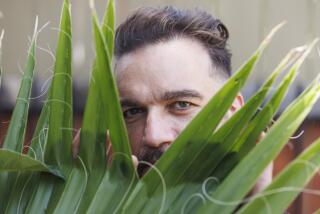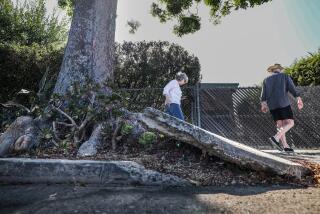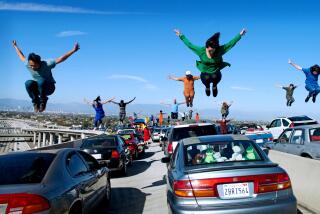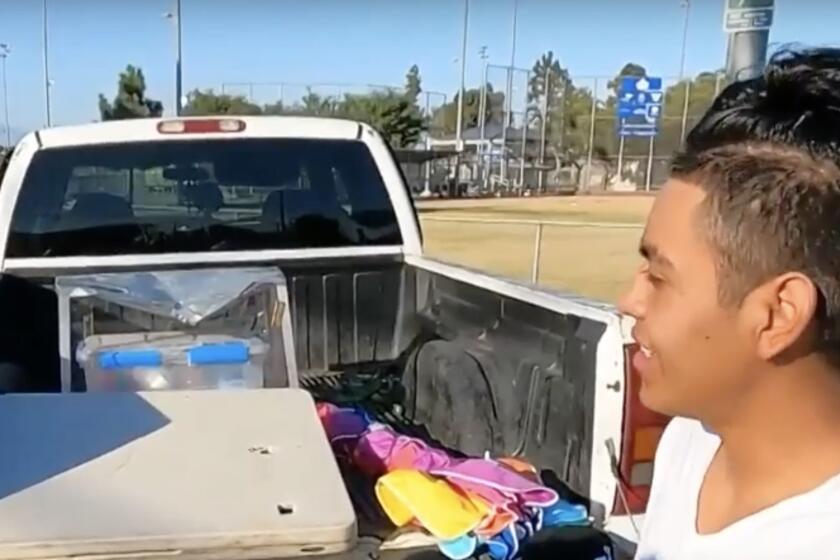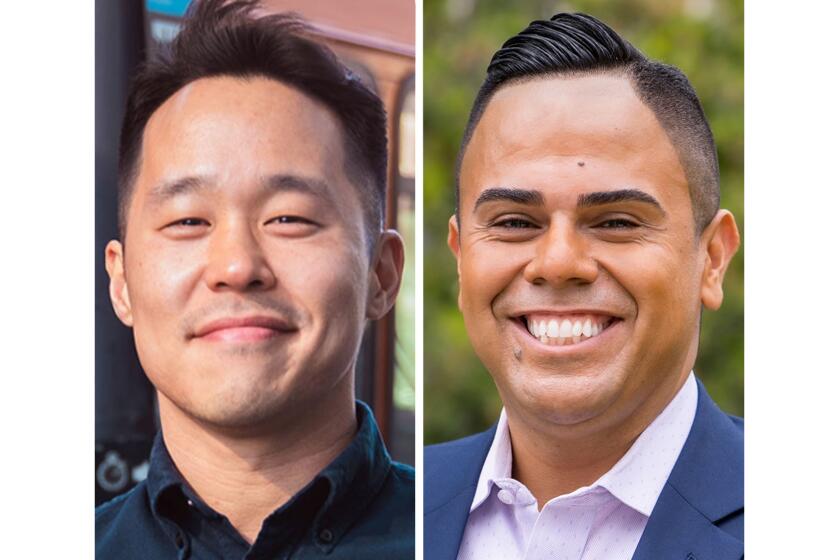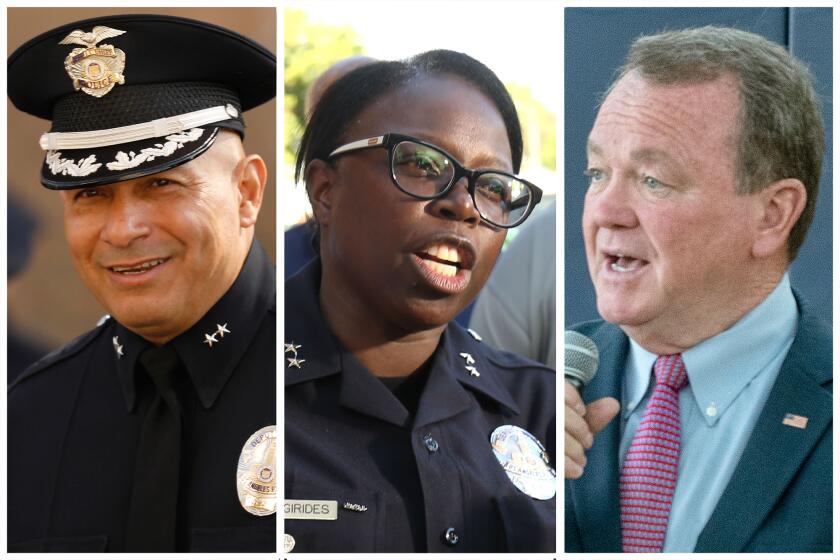The very nature of the city
Before I took my father on a hike in Ernest E. Debs Regional Park, the little known wilderness area northeast of downtown Los Angeles, I made sure to warn him.
You’re not going to think it’s beautiful, I told him. In fact, you might hate it.
My father lives in Portland, Ore., that green land of enlightened planning. More than once during visits here, usually while we are parked in a sea of brake lights and exhaust on the freeway, he turns to me and demands: “Why do you live here?”
I never had a satisfactory answer for him, and I certainly was not expecting a walk in Debs to convince him of my adopted city’s charms. The 320 acres of steep trails, oak trees and scraggly grass rising along the 110 Freeway has long been the neglected wild child of the Los Angeles city park system. When my dogs and I first began venturing there a decade ago, I found it not just ugly, but downright frightening, even in the company of a pit bull. The bushes in the lower part were flecked with trash, needles and other, more disgusting, signs of illicit rendezvous. On the upper trails, coyotes sometimes stopped to stare with brazen eyes.
Still, my dogs needed to run, and this park was the nearest to my house. On a recent visit my father came too. He looked skeptical when I led him up a steep, rutted dirt trail and around a locked gate — the way to enter the park on its less-used north side. We headed up. My father didn’t comment on the roar of cars echoing up from the freeway or the high weeds; he didn’t need to, his face said it all.
But when we reached the top, a remarkable sight met us. The view was particularly glorious on this day: the towers of downtown glimmering against the blue sky and green hills, and past them, the cranes at the Port of Los Angeles like a scattered erector set.
It was the foreground that was so unexpected, though: People, lots of them, walking, hiking, picnicking. There was less trash, fewer weeds, and more native plants, with delicate flowers.
We headed farther into the park, passing families with small children visiting the park’s Audubon Center, an urban nature center that opened its doors in 2003. There were signs for fun runs and upcoming cleanups. There was even a very Portland touch: a little blue container that could hold plastic bags, for people to pick up after their dogs.
*
Debs Park was created nearly 50 years ago, largely thanks to the efforts of Los Angeles County Supervisor and Councilman Ernest E. Debs, who had a wily ability to convince developers to set aside open space as a condition for permits to build.
But though it existed on maps, in real life, it didn’t look much like a park. By 1994, when it reverted from the county to the city, much of Debs was surrounded by a forbidding chain-link fence, and it was seen as a good place to go if you wanted to get mugged, or worse.
Enter Mike Hernandez, then a Los Angeles city councilman, who grew up in the shadow of the park. He had been to the Santa Monica Mountains as a child, and remembers thinking there was no reason there shouldn’t be a park like that closer to home. He helped direct millions in bond money to fix up Debs.
Then, in 2001, Hernandez and his successor, Councilman Ed Reyes, worked with the Audubon Society to bring the nature center to the park. It turned out that in addition to all the people doing drugs and carrying out other illicit activities in the park, there were also more than 140 species of birds living there, or dropping by, including many who stop in the black walnut groves on their migrations.
There was just one problem: Many people were still afraid to come.
Change came bit by bit.
The Audubon Center began hosting field trips and summer camps for children, handing out free binoculars and nature guides for weekend visitors. Volunteer groups and nonprofits, including Tree People and local residents, sponsored park cleanups and fun runs and tree plantings that drew more people into the park.
A few years ago, the center also began sponsoring a women’s fitness hike, with free child care. Around that time, Audubon Center Director Jeff Chapman said, observers began reporting more frequent sightings of a once rare species: women walking by themselves.
Hernandez, who left office in 2001 but still works for the city, said he is thrilled at what’s happened, but he wants more. He’d like to see Debs Park connected to other open spaces on the Eastside, including Heritage Square and the Southwest Museum, and to turn it into a park almost as grand as Griffith Park, “the big park by the Arroyo,” he says he would call it.
*
I knew none of this history that day I stood at the top of the ridge with my father. But as a pair of red-tailed hawks spiraled out of the sky right in front of us, my father nodded at me, as though to signal that he was starting to understand: Making a life in Los Angeles is about learning to look past the relentless, grim cement that at first impression seems to cover every surface. It’s about training yourself to find the strange, unexpected beauty amid the ugliness, like the sight of a hawk riding thermals over a vast expanse of freeway, or the call of a black phoebe that you can make out just above the thrum of traffic.
And bit by bit, you start to build your own way of seeing and loving the city. And sometimes, if you’re lucky, a place like Debs Park will transform, and the moment you notice it, it will feel, just for a minute, like this great, horrible city is starting to love you back.
More to Read
Sign up for Essential California
The most important California stories and recommendations in your inbox every morning.
You may occasionally receive promotional content from the Los Angeles Times.
